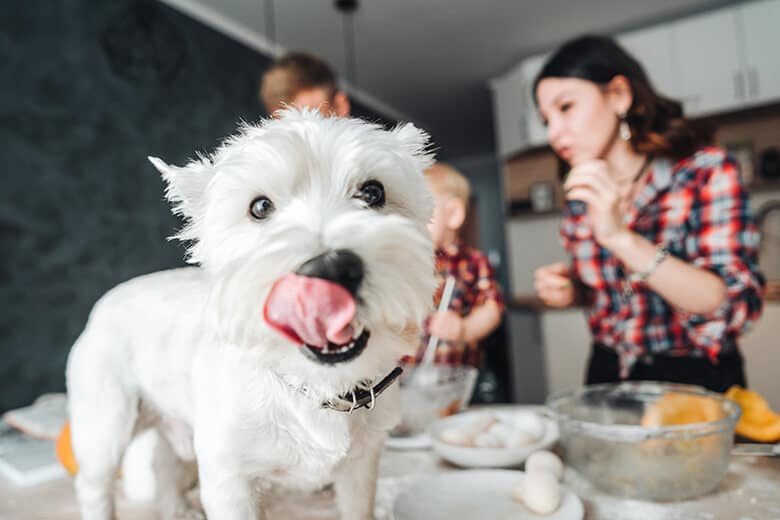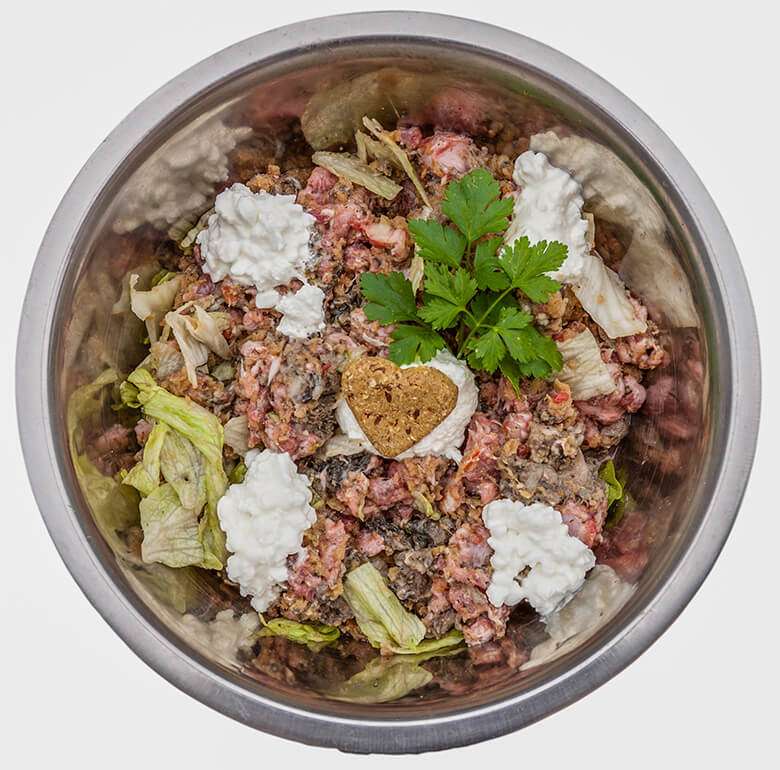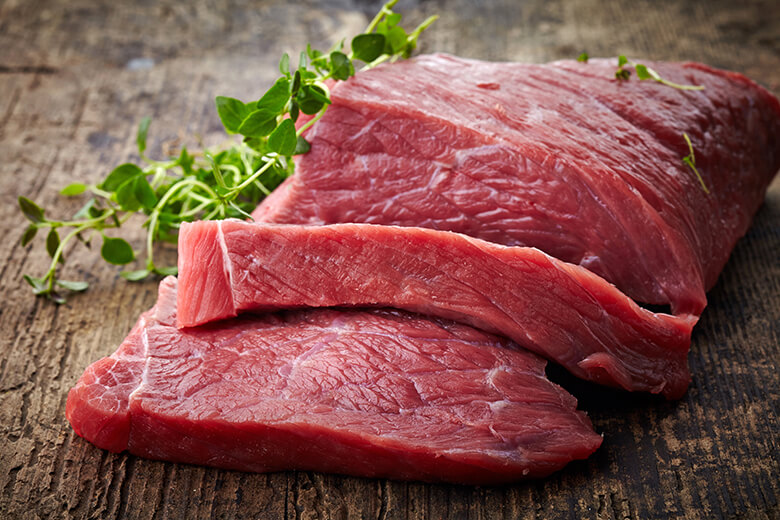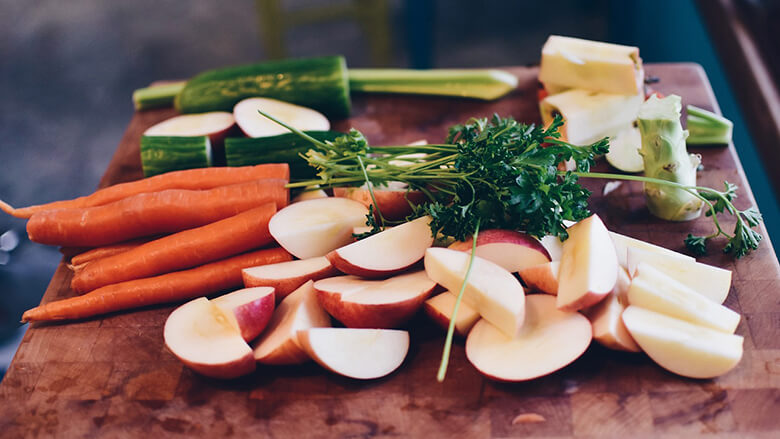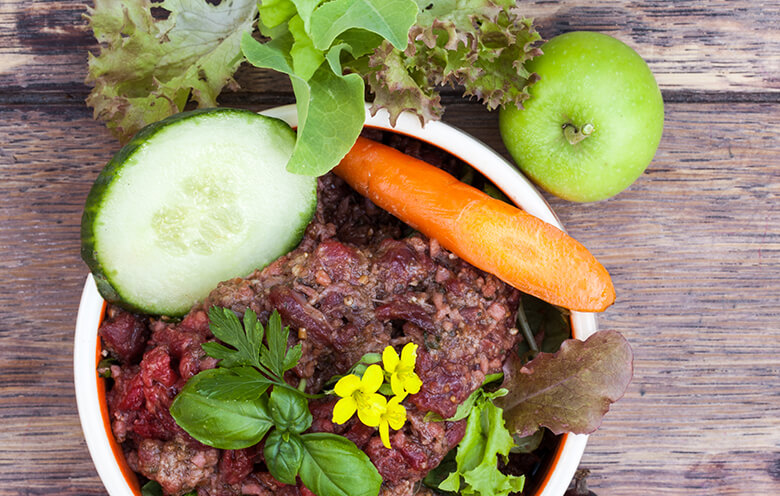Dogs love food. It’s at the center of our relationship and part of our contract as dog parents: we feed our dogs, and in return, they reward us with unconditional love.
But not all dog food is created equally. There’s a lot of misinformation about it, starting with the commercial dog food you buy at the grocery or pet food store.
The FDA releases frequently updated lists of recalled dog food and treats for reasons including salmonella and listeria contamination, elevated vitamin D levels, microbial contamination or the horrifying discovery of pentobarbital, a euthanasia drug, which was recently declared a “pervasive problem” by Dr. Steven Solomon, the director of the FDA’s Center for Veterinary Medicine.
Commercial dog food also regularly includes ingredients such as meat by-products, which can contain the rendered meat of diseased animals along with lovely things like feet, beaks, feathers, entrails, heads and other parts of the animal that remain after the meat is removed.
It does help to be informed about the ingredients in the food you buy, but even feeding the best quality commercial dog food doesn’t eliminate the possibility of contamination or the fact that your dog is still eating an inferior product that “is not fit for human consumption.”
Related: We Compared the Top Dog Food Delivery Companies on Ingredients, Price and What Makes Them Special
For those who have the time and resources, one option to ensure you are providing the best dog food for your pup is to make it yourself.
Benefits of Cooking Your Dog’s Food
When you cook for your dog, you can ensure that you dogs are not getting the kinds of unmentionable ingredients — animal digest (you don’t want to know what this is), toxic preservatives (like EQ, a powerful but toxic preservative), diseased animals, even reportedly dead dogs and cats (which is how pet foods are believed to be contaminated with phenobarbital, a euthanasia drug) — often found in commercial dog food.
You know the origin of the meat and other ingredients. You can add extra healthy vegetables and fruit and leave out non-nutritious fillers. You can also make their food in large batches and freeze it in portions, so that one afternoon spent cooking can last an entire month or more, depending on the size of the dog.
Core Ingredients for Canine Nutrition
You can substitute ingredients for most recipes — as long as you choose healthy, dog-friendly ingredients nutritionally similar to the original ingredients. In fact, many think it’s a good idea to switch out the proteins and carbohydrates to provide your dog with a varied, optimal nutrition.
Dogs need six essential nutrients. These are:
- Water
- Protein
- Fat
- Vitamins
- Minerals
- Carbohydrates
The idea ratio of each category is up for debate. (You should consult with a professional before making food). Yet, here is a general guideline for your food to be balanced:
- Organ meats (liver, heart, kidneys) …… 5-10%
- Eggs…… Few times a week
- Dairy (yogurt, goat milk, cheese, others) …… 10-15%
- Muscle meat or fish…… 50%
- Vegetables (Grains, beans, starchy vegetables like potatoes) …… 25%
- Fruits…… minor amounts
Home-cooked dog diets usually include a wide variety of foods fed at different meals or on different days, so a complete and balanced diet is supplied over time, not at every meal.
Let’s take a brief look at the best of the best in the main categories.
Related: The Ultimate Weight Loss Guide for Your Dog
Protein
Protein is comprised of 20 amino acids. Dogs produce around half of these internally. The others, called “essential amino acids” must be provided by the food dogs eat.
Protein sources for canines should be nutritionally dense and easy to digest. This is called “biologic value,” which is a term to describe how easily dogs can digest the available protein from a particular food source and absorb it into their systems.
For dogs, the best protein comes from animal sources (however, there are vegetarian and vegan sources out there, too). It’s a good idea to change your dog’s protein source frequently to provide different amino acids and to prevent food sensitivity from developing.
Optimal protein sources include:
- A good source of lean protein, but for the best nutritional content, by from organic, cage-free, or free-range sources.
- An excellent protein source, turkey is rich in natural minerals like iron, zinc, potassium, and phosphorous, and B vitamins. Also, like chicken, it is preferred to come from organic, cage-free, or free-range sources.
- Beef can be an excellent protein to if it’s pasture-raised, organic, and whole cuts of beef.
- While fish is a good source, it is not believed to have all the necessary nutrients, so use as a supplement with another source. It does have high levels of essential omega-3 fatty acids and lean protein, and it’s low in fat and easily digestible.
- This is a natural source of protein as dogs eat rabbits in the wild, but use an organic, free-range source rather than farmed to get the full range of nutrients.
- An excellent protein for dogs with allergies, it’s very digestible and nutritionally dense with high levels of thiamin, riboflavin, vitamin B6 and B12, phosphorus, niacin and zinc.
- This is a good source of digestible protein. Eggs contain vitamin A and B12, riboflavin, folate, iron, selenium, and fatty acids. Eggs should only be used as a supplement with other protein sources.
Carbohydrates
Carbohydrates are the primary source of food that the body uses for energy. They contain macronutrients made up of units of sugars, starches or indigestible fiber. Carbohydrates are the only food group not essential to dogs because they can synthesize glucose from sufficient dietary protein and fat. However, healthy carbohydrates contain crucial vitamins, minerals, antioxidants and plant-based nutrients that dogs need to reach optimum health.
Healthy carbohydrates include varieties of dog-friendly vegetables, fruits, legumes and gluten-free grains. Notice the word “dog-friendly.” There are varieties of fruits, for example, that are deadly to dogs. Below are some fruits and vegetables that can be toxic to your dog, with some becoming poisonous when your dog ingests the skin or pit.
- Grapes
- Raisins
- Currants
- Onions
- Garlic
- Chives
- Avocado
- Cherries
- Mushrooms (depends on the kind)
- Tomatoes
- Persimmons
- Peaches
- Plums
- Apricots
- Rhubarb
- Leeks
The following carbohydrates are excellent sources of nutrients and energy:
Fresh fruits: apples, bananas, berries, cantaloupe, blueberries, strawberries, raspberries, blackberries, watermelon, bananas, cantaloupe, cranberries, mangos, oranges, pears, pineapple, kiwis
Vegetables: spinach, carrots, green beans, squash, pumpkin, peas, sweet potatoes, zucchini, red beets
Whole grains: oats, barley, brown rice, amaranth, quinoa, teff, buckwheat
Fats
Fats are a concentrated energy source in a dog’s diet. They supply the essential omega-3 and omega-6 fatty acids to enable the absorption of the fat-soluble vitamins A, E, D and K. Fat protects the internal organs; maintains normal, healthy cells; regulates body temperature; and promotes a healthy nervous system.
More importantly — at least to dogs — fat makes food taste good. After all, the food you make can be extremely healthy, but not if your dog won’t eat it. Fat should make up the smallest portion of your dog’s diet, and it should be only healthy fats to have a beneficial effect.
Dogs require omega-3 and omega-6 fat in their diet because they can’t make it internally. Good sources of these fats include:
Omega-3 fatty acids: flaxseed, chia seed, hempseed, and walnut oils; fish like salmon, herring, anchovies, salmon, mackerel, tuna, mussels, and sardines; vegetarian sources like algae, flaxseed, chia seeds and freshly ground wheat germ.
Omega-6 fatty acids: the oils in seeds and nuts including hempseed, soybean, safflower, sunflower and corn oils; and meat, poultry, and eggs
Related: Here’s What Is in Dog Food That Causes Allergies — and What to Do About It
Vitamins and Minerals
The biggest issue most people have with making their own dog food is whether or not the food has everything your dog needs.
The best way to be sure your dog is getting the right nutrition is to start with a good recipe. You should also talk to your veterinarian before switching your dog’s food; he or she may have some advice relevant to the health of your specific dog.
You can also start with a premixed dog food base, and then just add fresh ingredients. Good ones are The Honest Kitchen, Urban Wolf or Dr. Harvey’s.
If you want to plunge right in without using a premix, you can consider adding a vitamin supplement to your dog’s food. Some of the best include CrockPet Diet, Balance IT, Just Food For Dogs and U-Stew for Dogs.
Get Cooking
There are all kinds of recipes available online, but they’re not all created equally. Cooking for your dog makes you responsible for feeding him appropriate ingredients in balanced ratios.
There are sites specifically designed to balance those ingredients. One of them, appropriately named Balance IT, allows you to choose ingredients from five different food groups, and then it generates a recipe. The Farmer’s Dog and Just Food for Dogs actually puts the recipes they use in their own homecooked food online in a handy guide (recipes are made to be used with their premixed supplement).
You can also take a look at some canine cookbooks, including Home Cooking for Your Dog, to get some ideas.
Starter Recipe:
Here’s an easy recipe I use, which I alter by switching out appropriate proteins, vegetables, fruits and starchy base. You’ll find versions of this recipe on different websites. I like it because I can throw the ingredients into a crockpot, turn it on and take my dogs out for a walk; in eight hours, I have enough healthy food to feed my dogs for a month.
Easy Crockpot Beef and Rice Meal
For this recipe, you’ll need a 6- to 8-quart slow cooker. I also find a food processor speeds up the process, and it chops the vegetables into small enough pieces for my five-pound dog. It’s also a good way to “hide” vegetables that your dogs would pick out of their bowl otherwise.
Ingredients
- 2 ½ pounds ground beef
- 1 ½ cups uncooked brown rice
- 1 ½ cups chopped butternut squash
- 1 ½ cups diced carrots
- ½ cup frozen peas (or green beans)
- 1 to 3 cups chopped spinach
- 4 cups of water
Put all the ingredients into a slow cooker, starting with the rice and water. Add the meat and stir to break up. Add the veggies last. Cover and cook on the low setting for at 5-8 hours, depending on the consistency you want. Portion out into freezer containers and freeze. Thaw up to four portions in the refrigerator overnight. It will keep in the fridge for up to 3-4 days. You can also freeze in single servings, and thaw each portion overnight in the refrigerator.
I have swapped out beef for chicken or turkey, or used half ground beef and half ground chicken. I’ve also added different vegetables, swapped out the brown rice for another whole grain, and added appropriate fruit, such as apples (make sure to core and remove all seeds, which are toxic to dogs) and blueberries, pureed in a food processor.
It’s a good idea to add one of the above-mentioned pre-mixed supplement to your dog’s food after heating and before serving.
Also, BalanceIT also has an “Auto Balancer EZ” that allows you to choose from five groups to create a balanced recipe.
Happy cooking!
Related: Check Out Our Verdict for Dog Food Delivery Company NomNomNow













